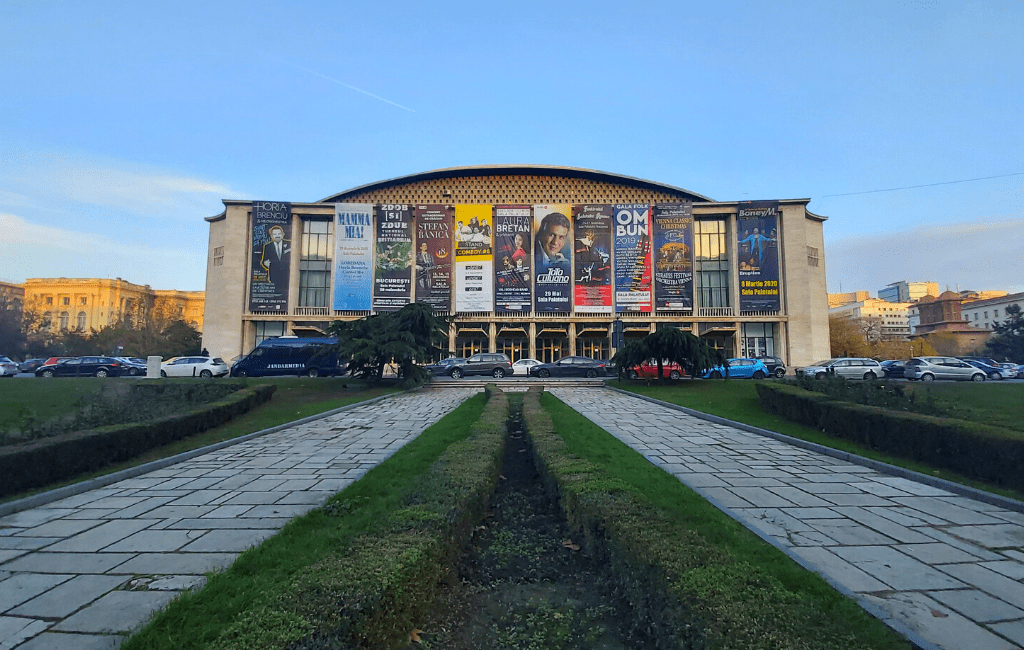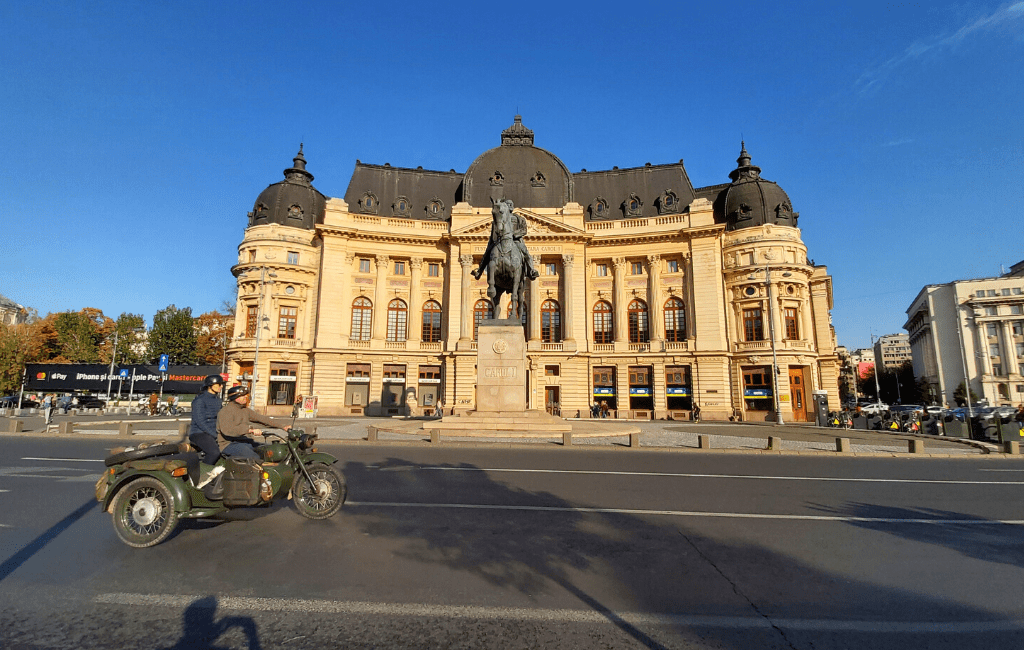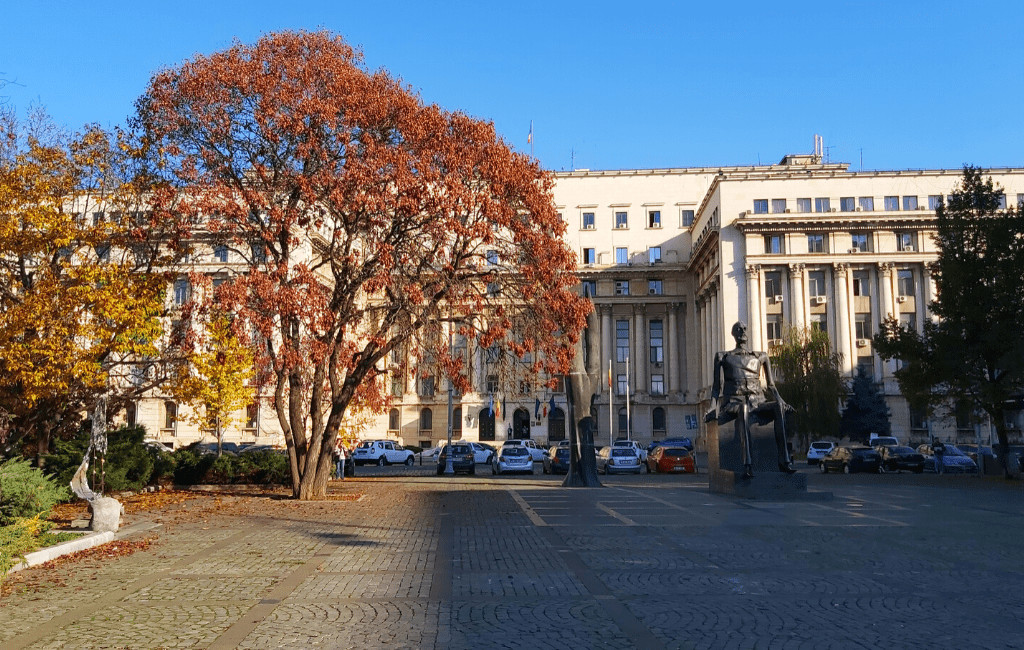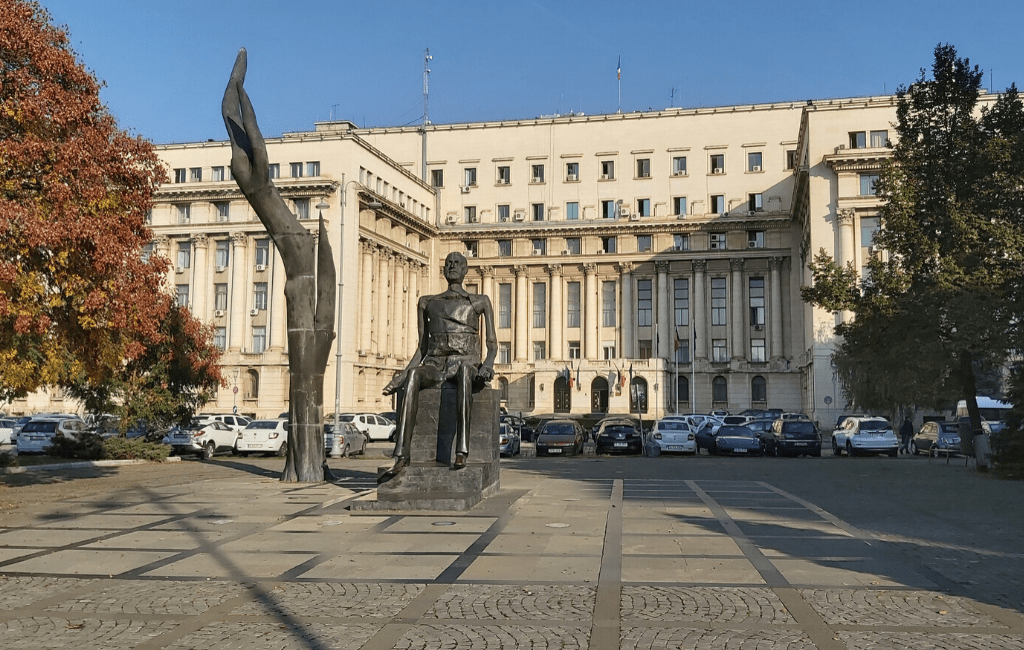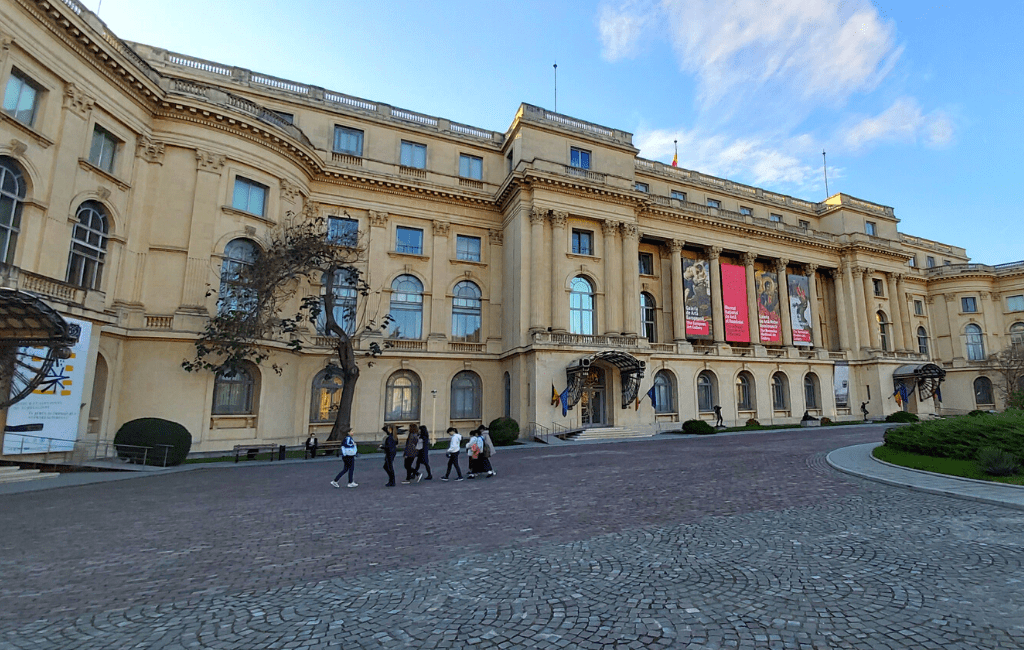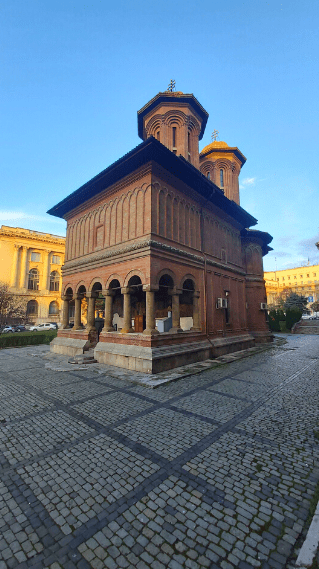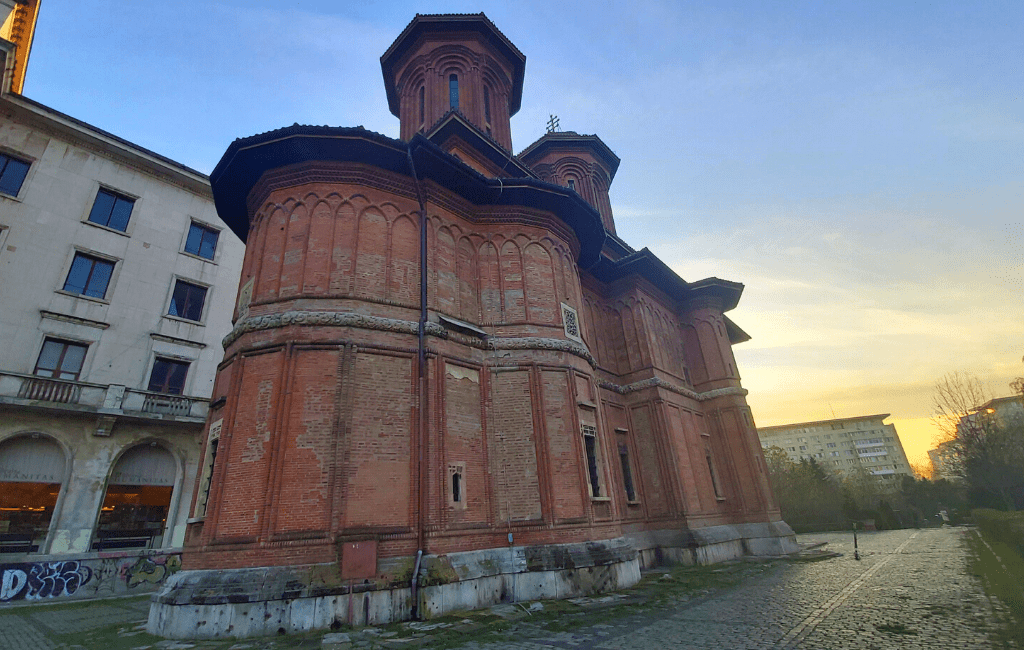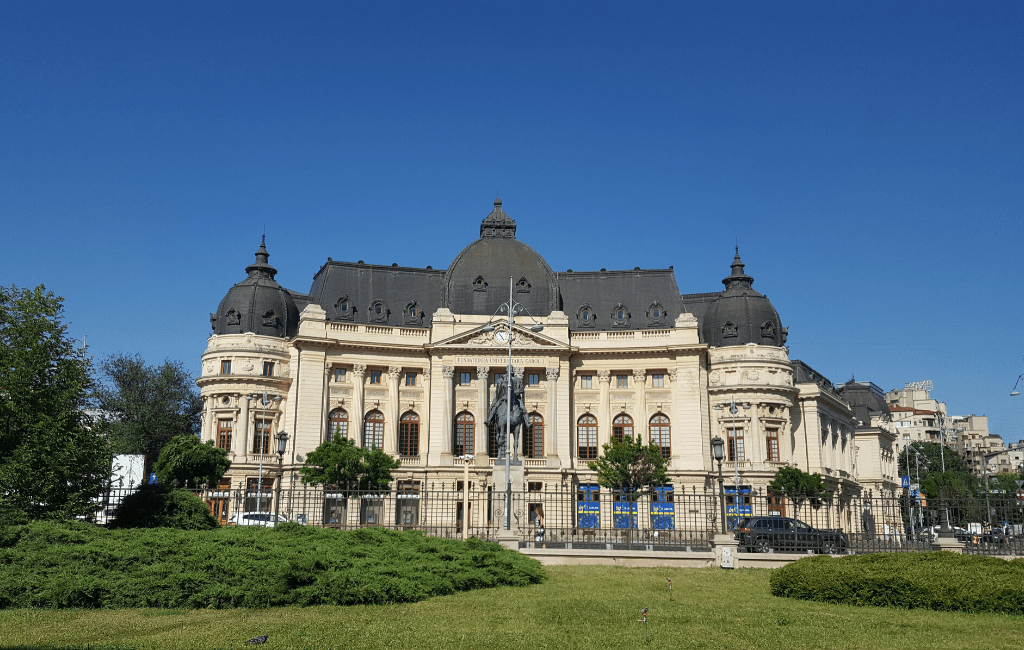Revolution Square is considered to be not only one of the most important and representative public markets in Bucharest but also a landmark of local and national history as well. Thus, it is a place infused equally with a cultural and historical load. First, the market is surrounded by some of the most important architectural and cultural landmarks in Bucharest. For example, the Royal Palace and the Senate Palace border the market, each contributing with its own profile to the general atmosphere of the square.
The Revolution Square is located on Calea Victoriei, known by the locals as Piața Palatului (Palace Square) until 1989; it was later renamed after the Romanian Revolution, which in Bucharest started at the meeting held by the communist president, Nicolae Ceaușescu, right here, in the actual Revolution Square.
Revolution Square is considered to be not only one of the most important and representative public markets in Bucharest, but also a landmark of the local and national history as well. Thus, it is a place infused equally with a cultural vibe.
Thus, the Royal Palace, which now houses the National Museum of Art in Romania, and the Senate Palace, which evokes both the glory days and the fall of the Nicolae Ceausescu regime, are the main architectural presence in the Revolution Square, complementing the heritage of the place with their cultural heritage and character.
What should be kept in mind is that Revolution Square is a tourist destination that should not be overlooked as, as mentioned, it is representative of the cultural and historical identity of the city of Bucharest and of the entire country. The Revolution Square, formerly known as the Palace Square, is also an excellent starting point for those who want to go through a comprehensive tour of Bucharest, as the market is located on Calea Victoriei and, for example, a short distance from Cişmigiu Park (this being located about 200 meters west of the market).
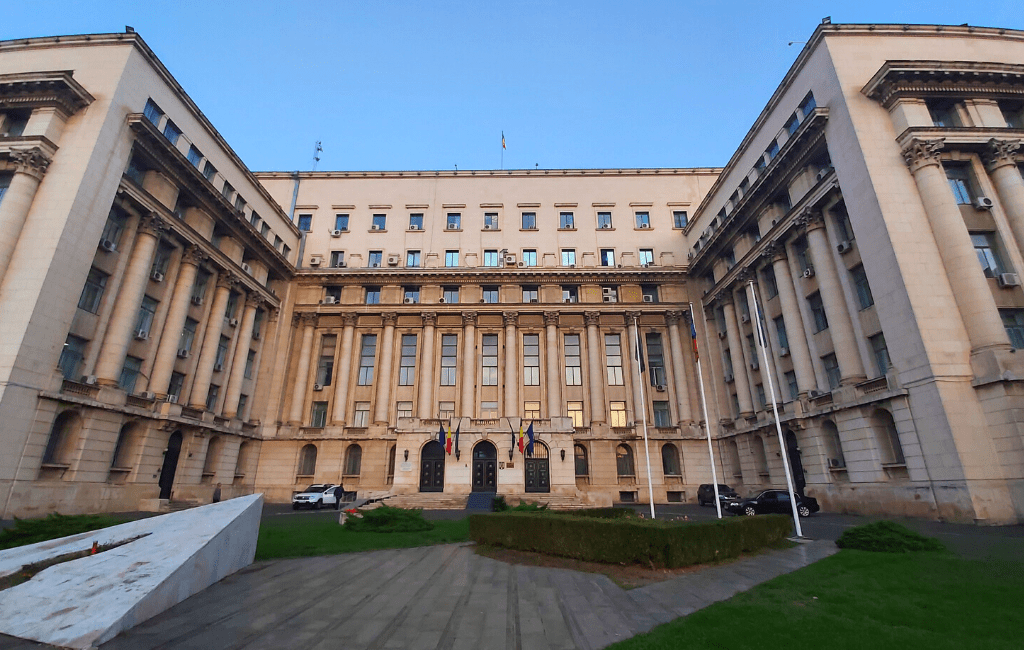
The square also houses the building of the former Central Committee of the Romanian Communist Party (from where Nicolae Ceaușescu and his wife fled by helicopter on December 22, 1989, at the beginning of the Revolution).
Ceauşescu's famous last speech was held at the balcony of the former Central Committee of the Communist Party building, on 21 December 1989. The building is a distinctive example of rationalist architecture from the late 1930s, with much to tell about the Cold War period.
In 1990, the building became the seat of the Senate and since 2006 it houses the Romanian Ministry of Internal Affairs.
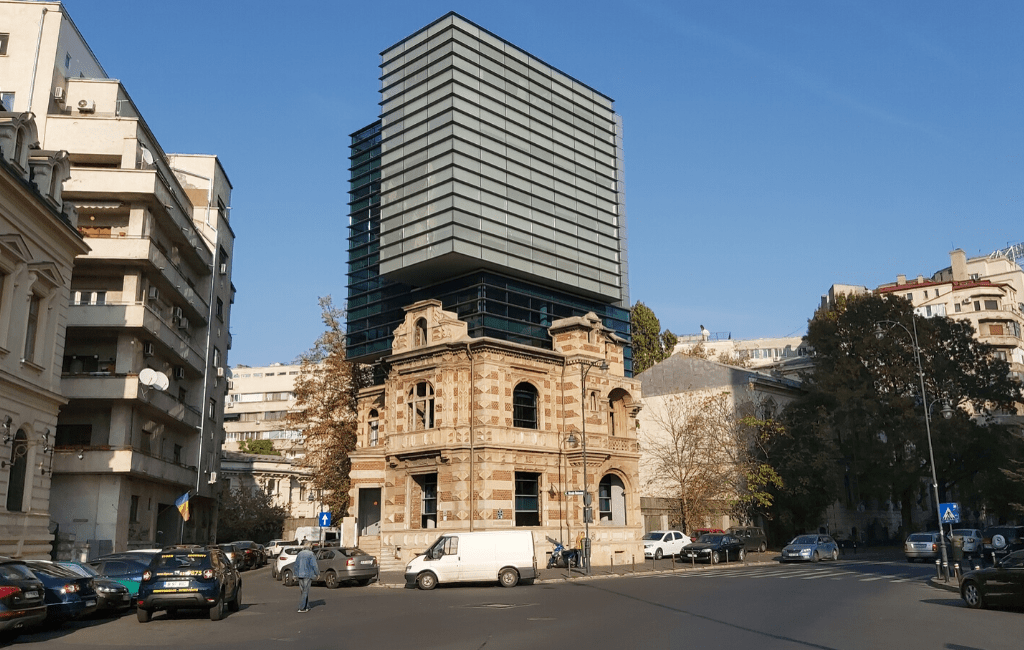
The building of the Union of Romanian Architects became one of Bucharest’s top tourist attractions because of its architectural value. It is now an iconic architectural gem in Revolution Square.
Built by Grigore Paucescu at the end of the 19th century, it was home to the Austrian embassy before World War I. In December 1989, the building was almost entirely burned down and destroyed as it was suspected to shelter terrorists. After December 1989, the house was split in two: half of it became the headquarters for the Romanian Academy, while the second half belonged to the Union of Romanian Architects. Built-in the French Renaissance architectural style, the landmark retains from the former imposing building two facades that succeed to appeal to passers-by on the look of architectural gems.
Nowadays, the building is one of the best examples in Bucharest of retaining a historic facade while constructing a new building behind and above it.
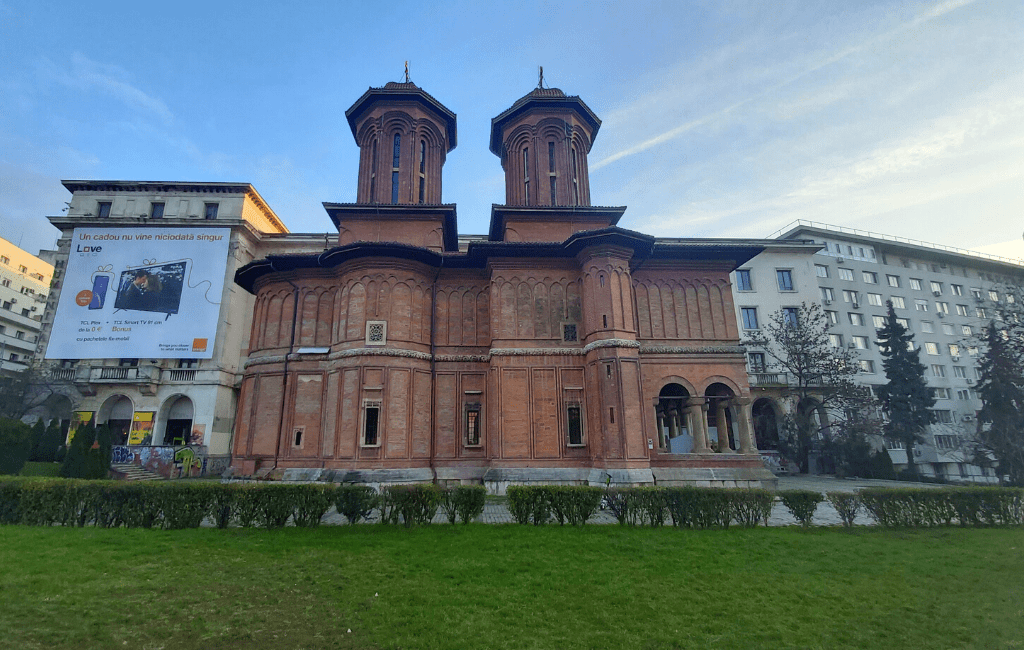
Kretzulescu Church is an Eastern Orthodox church. It was built between 1720 and 1722, and it is one of the best-preserved and most representative orthodox places of worship in Bucharest. The church was ordered by Iordache Kretzulescu and his wife, Safta, daughter of Constantin Brâncoveanu himself, Iordache Kretzulescu being chancellor at the time.
The church, damaged during the November 1940 earthquake, was repaired in 1942–1943. In the early days of the communist regime, Kretzulescu Church was slated for demolition but was saved due to the efforts of architects with faith, such as Henriette Delavrancea-Gibory. More renovations took place after the Bucharest earthquake of 1977 and the Revolution of 1989. To the side of the church now stands now a memorial bust of Corneliu Coposu, who was one of the most respected political leaders of Romania who served a hard time in communist prisons.
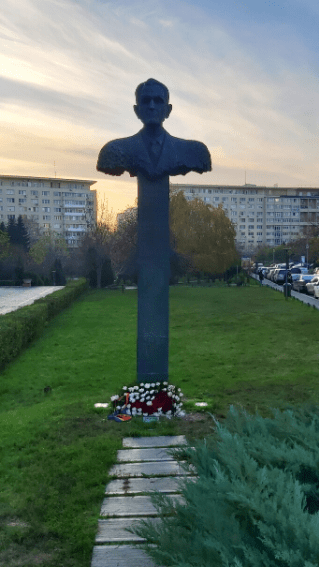
Across the street from the church, you will notice the bust of Corneliu Coposu. He was the founding leader of the new Romanian National Peasant and Christian Democratic Party (PNTCD) after the Revolution.
The story of Corneliu Coposu is one of the most remarkable in the annals of Communist repression in eastern Europe. In 1990, aged 74, he emerged from nearly 50 years of prison and police surveillance to revive the National Peasant and Christian Democratic Party (PNTCD) and make it the most important party to oppose the former communists who took power in Romania. He was an opponent of intolerance and did his best to foster relations with Romania's Hungarian and Jewish minorities.
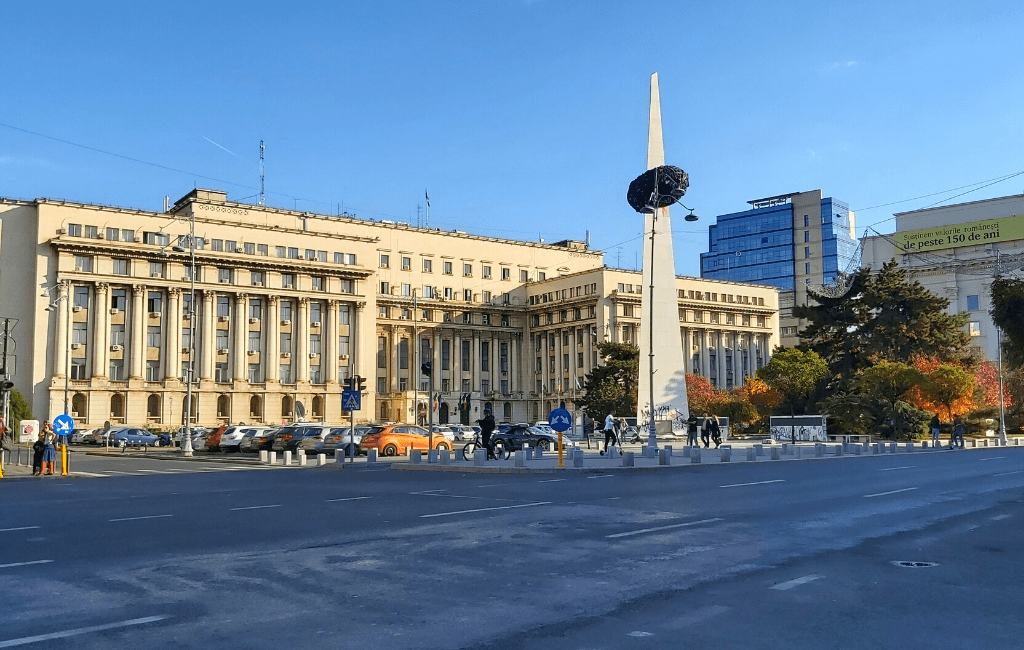
The unusual structure was commissioned in 2004 by the Bucharest City Hall - The Memorial of Rebirth and was inaugurated on August 1, 2005. It’s part of a broader monument that honors the victims of the Romanian Revolution of 1989, in which communism was overthrown.
Designed by Alexandru Ghilduş, the memorial is a single centerpiece of white marble that reaches towards the sky, and with its 25 meters (82 feet) height the pillar has a metal “crown” near the top. The memorial complex was established in Revolution Square, where Nicolae Ceauşescu was publicly overthrown. The monument shows a sort of entangled sphere with a pointed stake through it by a big marble stake.
The area is open 24/7, so you can stop by whenever, though it's best to go during daylight hours. The locals named the entangled sphere “the potato”, which is nowhere near the significance it was meant to have.
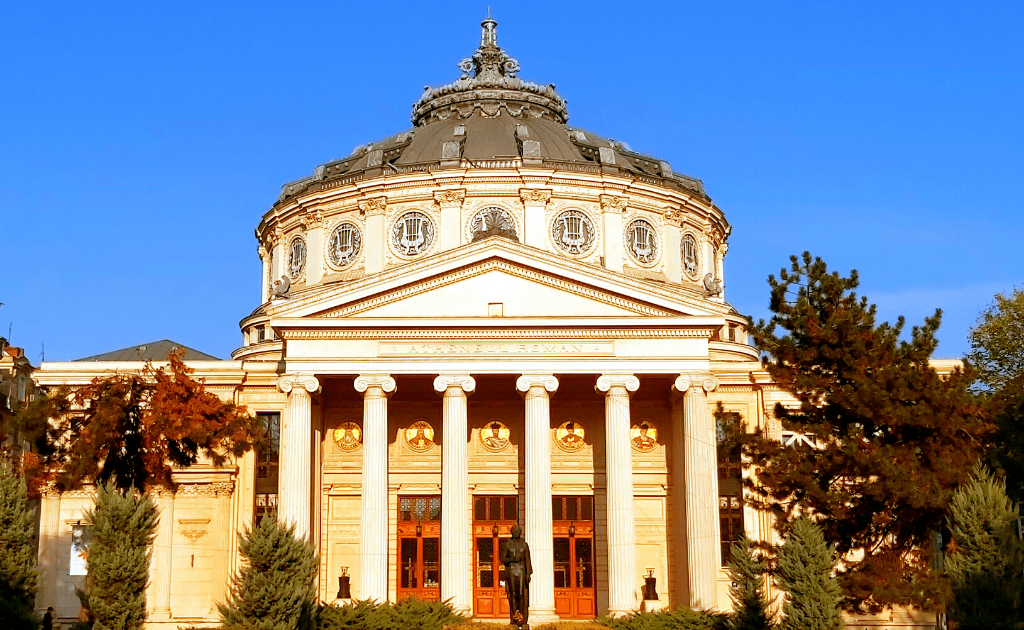
The exquisite Romanian Athenaeum is the majestic heart of Romania’s classical-music tradition. Scenes from Romanian history are featured on the interior fresco inside the Big Hall on the 1st floor; the dome is 41m high. A huge appeal dubbed ‘Give a Penny for the Athenaeum’ saved it from disaster after funds dried up in the late 19th century.
On the other hand is one of the most representative concert halls in Bucharest, home to the George Enescu Philharmonic Orchestra. It is normally open during concerts and special events and amazingly the bizarre Paucescu House, a structure that detaches itself by materializing, without exaggerating, a unique architectural concept on a national scale. and, according to the majority of visitors to Bucharest, on a global scale.
Located on Calea Victoriei, the Romanian Athenaeum is an important cultural center and a must-see architectural gem but is also defined by the fact that it is one of the oldest and most important cultural institutions in Bucharest.
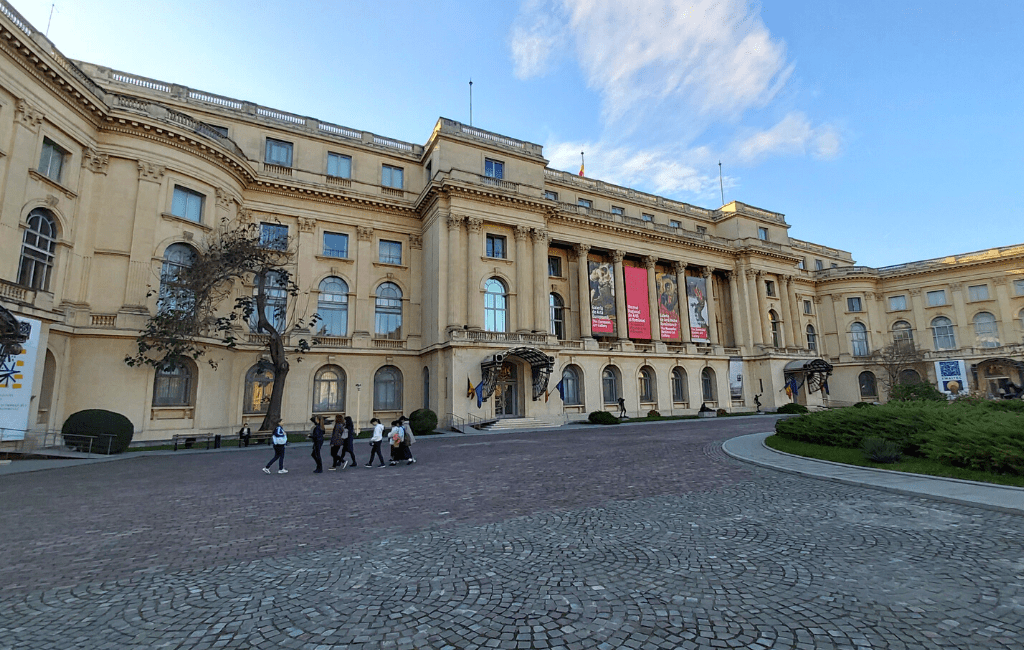
The National Museum of Art of Romania includes the most important and the most comprehensive collection of fine artworks in the country. The proximity to the Romanian Athenaeum enhances the tourist visibility of the museum. The museum is a must-see of the touristic objective of Bucharest.
The three galleries hosting the permanent exhibitions represent a source of identity of the Romanian culture, being sought and appreciated by foreign and Romanian tourists.
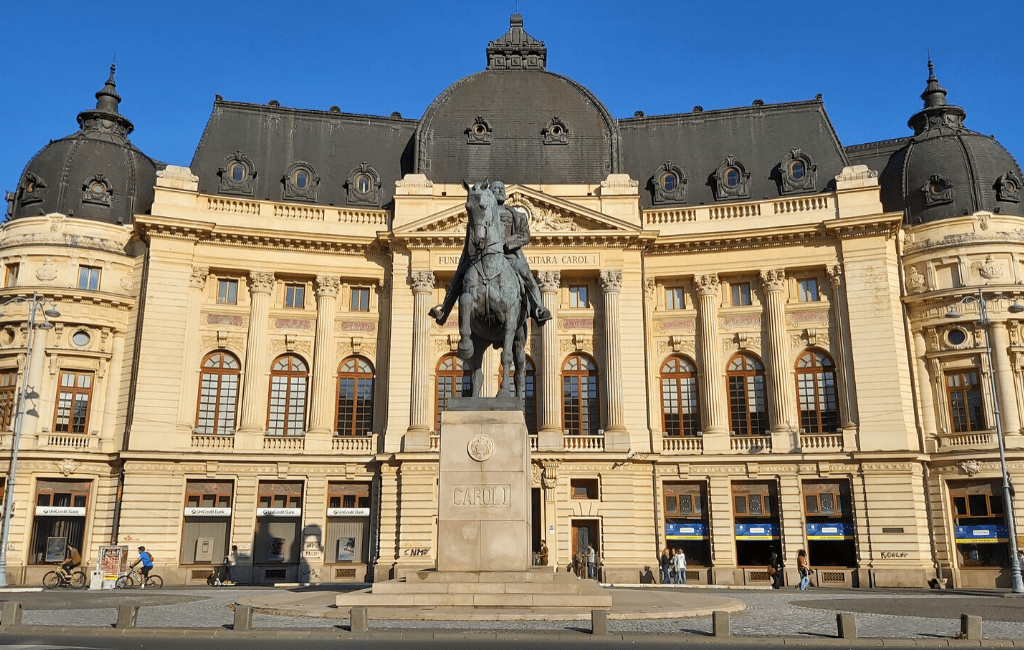
The present Central University Library was founded in 1895 as the Carol I Library of the University Foundation. It was built on land bought by King Carol I of Romania for the “Carol I University Foundation” (Fundația Universitară Carol I) and designed by French architect Paul Gottereau. During the Romanian Revolution of 1989, a fire started in the building and over 500,000 books, along with 3,700 manuscripts, were burnt.
Starting in April 1990, the building was repaired and modernized, being reopened on 20 November 2001.
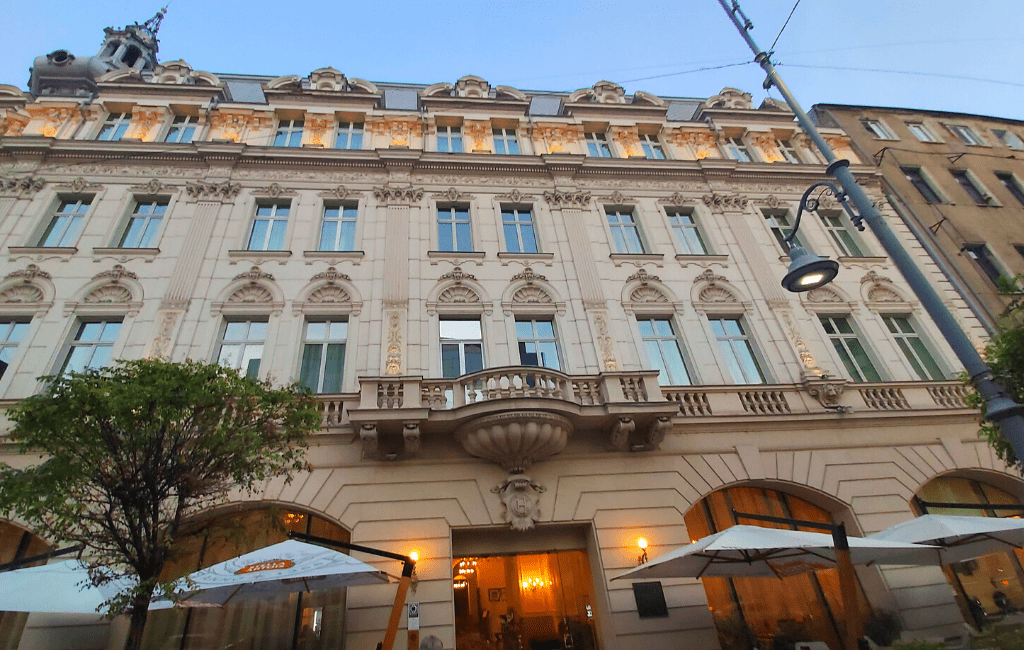
Not far away from the actual Revolution Square, there is the Continental Hotel, which deserves to be seen as it witnessed some emotional moments after the Revolution.
The former King Michael of Romania, who has died aged 96, was the last surviving head of state from World War II. Although he lived most of his life in exile, the late King Michael of Romania will always have a special place in the hearts of the Romanian people.
King Michael tried to return to the country after the fall of communism but was kept away from Romania by the president of that time, Ion Iliescu. In 1990, King Michael came to Romania with his family. But on the Bucharest-Pitești highway, the authorities set up a police blockade, accused the Royal Family of entering the country illegally, confiscated their passports, and expelled them from Romania.
The first time King Michael was allowed to come to the country was in 1992, near Easter. However, he was not allowed to give a speech in Parliament, so the King addressed the people from the balcony of his hotel room from the Continental hotel. A million people from all over the country came to see the king. King Michael was accompanied by Queen Anne and Margareta of Romania. From the balcony of the hotel, King Michael introduced his nephew, Prince Nicholas, a gesture considered by some of the monarchists to be an explicit one regarding succession, considering that the former sovereign had four daughters. During this visit, a million Romanians went out in front of the hotel, welcoming him with sympathy.

